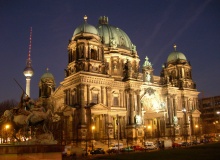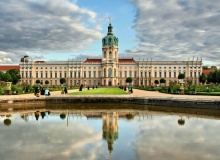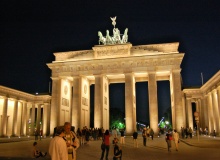Germany
A country with regions defined by food, dialect, traditions and history
Germany and its visitors are reaping the rewards of unity. Huge investments in infrastructure and services are not only erasing the Cold War dividing lines – the scars caused by World War II are also finally disappearing. Travellers are now likely to move around the country faster, dine better and experience newer attractions, such as the Reichstag's glass dome. A lot has changed, Once you stop looking at Germany strictly in terms of east and west, you'll start to see it as the Germans do: as regions sharply defined by dialect, food, traditions and history. For the best perspective, sample as many regions as possible. Booming Berlin, now the No. 1 tourist magnet, is the clearest benefactor of reunification. Travellers to the cultural centres of Dresden, Leipzig and Weimar in eastern Germany will find improved amenities there as well.
The north has the delightful old seafaring cities of Hamburg and Bremen. Along the Rhine and Moselle rivers are picturesque castles and steep, terraced vineyards. The Grimm Brothers collected the tales they heard in a trail of villages from Hanau to Bremen. In the south are snowcapped Alps, the alluring Black Forest, Munich, and Bavaria's boisterous beer halls and rococo palaces and churches.
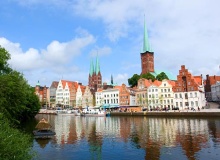
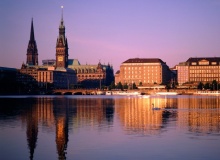
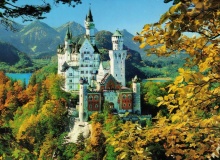
Frankfurt
The fifth biggest city in Germany, Frankfurt on Main has gained enormous economic power thanks to its position as a key transport hub and its status as a major venue for international trade fairs and other business events. Located in the middle of the highly productive Rhine-Main region, right at the centre of Europe, the city is the financial heart not only of Germany but also of the European Union.
The city has directed its post-war energies into its uncontested financial role. The modern skyscrapers of banks and corporations in the central business district are potent symbols of Frankfurt's economic strength and create a skyline that is more North American than European.
Most of Frankfurt's visitors come for one of the numerous trade fairs, exhibitions and congresses. But Frankfurt has another side to reveal to its focused business visitors. The city is at pains to impress with its cultural pedigree. Excellent museums, high-calibre performance groups and local festivals should entice the discerning guest away from the boardroom and the exhibition hall.
WHEN TO TRAVEL to Frankfurt
As a major trade show and convention town, Frankfurt's population swells during March-May and September-October - which just happen to be the best times to visit weatherwise. The winter months are prone to storms and freezing temperatures but zero tourist crowds. An exception is December when the Christmas market is in full swing. June to August can be rather hot but on the plus side, much of the action moves outdoors, and cafes, parks and the riverbank bustle with activity.
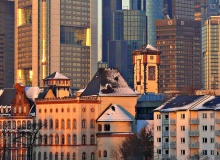
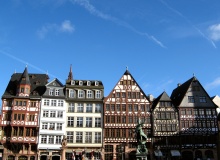
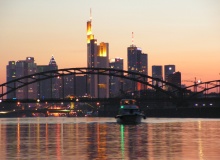
Munich
Located to the north of the Bavarian Alps, on the River Isar, Munich is Germany's third largest city, and is where the country's wealthy trendsetters like to ‘be seen'.
The city acquired the name München (‘home of the monks') from its first monastery, founded in the eighth century. Monasteries have since played an important role in the history of the city, not least by starting the beer brewing traditions for which the city has received worldwide renown.
In the city's six breweries beer quality is still based on the Reinheitsgebot (Purity Edict), introduced by the Bavarian Duke Wilhelm IV, in 1516, which forbids the use of anything other than the core ingredients of barley, hops and water in the brewing process.
Apart from the festivities of the world famous Oktoberfest the citizens of Munich demonstrate a cosmopolitan refinement as well as genuine passion for the region's many traditions. With a strong cultural scene, richly endowed art collections and excellent shopping, the city, also home of BMW cars and centre of the German film industry, certainly has more to offer than just light entertainment.
WHEN TO TRAVEL to Munch
Munich is a highly weather-dependent city. Its elevation makes it bitterly cold in winter and breezy in the summer. Watch out, above all, for Oktoberfest (the last two weeks of September and first week of October), when the hotels are booked solid and the city invaded by hundreds of thousands of tourists from around the world.
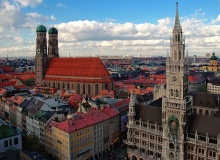
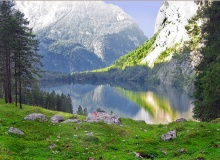
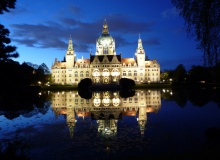
Berlin
Berlin is back – back as the capital of a reunified Germany and back as one of Europe’s greatest cities. Today, all the talk in Berlin is of the future.
In the biggest construction project in Europe since WWII, a new Berlin has emerged from the no-man’s land that was the divided city’s dead heart. The most symbolic recent construction is at the Reichstag. British architect Lord Foster has rejuvenated the German parliament with an impressive glass dome that symbolises the new transparency in German politics.
Coupled with this wave of new construction is a city laden with historical charm – from the old streets of East Berlin, which are slowly being restored after remaining unchanged for 50 years.
Tourism is on the rise, as visitors come to savour the intoxicating mix of old and new. Contrary to the usual clichés about Germany, Berlin is a city with a laid-back attitude and some of the liveliest nightlife in Europe. In Berlin today, there is everything from authentic beer halls and old Soviet era haunts right through to buzzing style bars and Latino nightclubs.
WHEN TO TRAVEL to Berlin
Most visitors arrive between May and September when the weather is the most reliable. Things are busier in high season, but despite the crowds, summer is a lovely time to be here because much of life moves outdoors. From November to early March, skies tend to be gloomy and the mercury often drops below freezing. On the plus side, there are fewer visitors and shorter queues.
